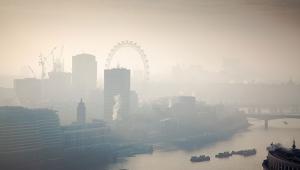Talk to your parents or grandparents and they’ll confirm air pollution used to be more visible, as the extensive burning of domestic and industrial fuel emitted large amounts of soot and particulates. Today, the air is visibly cleaner thanks to legislation, such as the Clean Air Act 1956, and the work of environmental health professionals.
However, major but far less visible problems persist. Poor outdoor air quality results in an estimated 40,000 premature deaths a year in the UK and there is evidence that it contributes to illnesses such as cancer, stroke, asthma and heart disease.
In addition, air pollution costs UK businesses and healthcare services more than £20bn a year – a considerable sum and surely large enough to prompt an urgent response by the government.
Sadly, the opposite is true. The government has been taken to court several times to get it to produce air quality plans, resulting in lacklustre responses, and there have been countless campaigns to raise awareness. Ministers are still failing to grasp the enormity of the situation.
The latest plans to tackle air pollution, issued at the end of July, had much of a focus on ending the sale of all petrol and diesel cars by 2040.
While this is a positive step, 2040 is far too late and the government needs to create incentives to remove these polluting vehicles from the road as soon as possible.
What really concerns the Chartered Institute of Environmental Health is that, yet again, the government fails to see that poor air quality is a national issue and continues – unfairly – to offload responsibility for it onto local authorities.
Councils are where the expertise lies and our members have an important role in monitoring and improving air quality.
Take Barnet Council, for example. Air quality in the borough has improved but still has a problem with nitrogen dioxide as, typical of suburbia, people tend to drive rather than use other forms of transport. A significant amount of traffic goes through Barnet from the M1, A1 or North Circular.
To turn this situation around, the local authority implemented low emission zones. This was followed by Barnet securing funds from the mayor of London between 2014 and 2016 to implement measures to reduce pollution. One such initiative saw Barnet Council erect a 73m2 “green screen” covered in ivy between St Joseph’s School and the busy A41, which sees 65,000 vehicle movements per day.
Relying on councils to take the lead will lead to positive results locally but there is the risk that this will result in regional inconsistencies when considered on the national stage.
There’s also cost. In the latest plans, the government provides only £250m to local authorities to address the problem. This is a drop in the ocean and, with only eight months to submit their plans, councils are being set up for failure before they even start.
In our response to the proposals, our suggestions included that the government should:
⦁ Provide financial support to target areas where air pollution is highest and where the largest number of people are exposed
⦁ Reduce the number of vehicles on the road that do not comply with EuroVI/6 or petrol Euro 3 standards
⦁ Transfer tax incentives for diesel to infrastructure development for ultra low emission and zero emission vehicles
⦁ Make better provision and incentives for sustainable travel plans incorporating public transport, cycling and walking.
Air pollution does not recognise boundaries. The government needs to take the lead and draw up a new clean air act, incorporating a national solution that is consistent, shares responsibility and ensures better funding – before it’s too late.





















